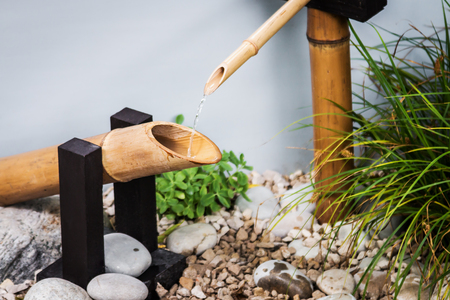Introduction to Bamboo Fencing in Indian Homes
Bamboo has been deeply rooted in Indian culture and daily life for centuries, playing a significant role in both rural villages and bustling urban areas. From the thatched huts of Assam to the backyard gardens of Bengaluru, bamboo fencing is cherished as a symbol of sustainable and natural living. The use of bamboo is not only an age-old tradition but also an eco-friendly practice that aligns with the Indian philosophy of living harmoniously with nature. This natural resource grows abundantly across India, especially in states like Tripura, West Bengal, and Kerala, making it accessible and affordable for people from all walks of life. Its strength, flexibility, and rapid growth make bamboo an ideal material for building secure yet aesthetically pleasing boundaries around homes, farms, and community spaces. As more Indians embrace green solutions and seek alternatives to plastic or metal fences, bamboo fencing stands out as a smart choice that honours traditional wisdom while supporting modern sustainability goals. Whether you are looking to create a boundary for your khet (field), a private nook in your angan (courtyard), or simply wish to add a touch of rustic charm to your surroundings, learning how to make bamboo fencing the Indian way is both practical and meaningful.
2. Essential Materials and Tools Required
Bamboo fencing is deeply rooted in Indian tradition, offering a sustainable and eco-friendly solution for protecting homes, farms, and gardens. Choosing the right type of bamboo and using the appropriate tools ensures your fence is strong, long-lasting, and harmonious with local landscapes. Below are the key materials and tools you will need.
Common Bamboo Types Used in India
| Bamboo Type | Region Found | Traditional Use |
|---|---|---|
| Bambusa bambos (Indian Thorny Bamboo) | South & Central India | Fencing, scaffolding, construction |
| Dendrocalamus strictus (Male Bamboo) | Northern & Central India | Strong fences, rural housing |
| Bambusa tulda (Tula Bamboo) | Northeast India | Weaving, fencing, handicrafts |
| Bambusa vulgaris (Common Bamboo) | Throughout India | Lightweight fencing, decorative use |
Traditional Tools Required
- Katti or Daab (Sickle/Chopper): For cutting bamboo stalks to desired length.
- Kulhadi (Axe): To split thick bamboo poles for posts.
- Nariyal Rassi (Coconut Rope): A natural fiber rope used for binding bamboo poles together; often preferred in rural settings.
Modern Tools for Efficient Crafting
- Hacksaw or Handsaw: For precise cutting of bamboo pieces.
- Drill Machine: To create holes for fasteners or rope binding.
- Measuring Tape: Ensures uniform size and placement of bamboo poles.
- Galvanised Wire: Provides additional strength and security compared to natural rope.
Sustainable Practices Tip
Select mature bamboo that is at least 3 years old to ensure durability and prevent premature decay. Always source bamboo locally to support community growers and reduce transport emissions. Use natural treatments like neem oil or cow dung paste to protect bamboo from pests without harmful chemicals.

3. Preparing Bamboo the Traditional Way
Bamboo preparation is a sacred step in Indian rural craftsmanship, with generations passing down methods to ensure strength and longevity.
Cutting Bamboo at the Right Time
Traditionally, local communities recommend harvesting bamboo during the waning moon or in the dry season, as this reduces sap content and makes the bamboo less attractive to pests. Use a sharp sickle or handsaw for clean cuts near the node, which helps avoid splitting and ensures uniform poles for your fencing.
Treating Bamboo for Durability
To prevent pest attacks and enhance durability, soak bamboo poles in running water—like a village stream—for at least two weeks. This process leaches out sugars that attract insects. Some artisans also smoke-cure bamboo over a slow fire, which adds further protection and imparts an earthy aroma.
Natural Pest Resistance Methods
For added defense against termites and borers, coat the dried bamboo with neem oil or cow dung slurry, both of which are trusted natural repellents in Indian agriculture. Allow the treatment to dry thoroughly under shade; direct sunlight can cause cracks.
Sizing and Smoothing
Use a dao (traditional machete) to trim each pole to the required length. Rub rough spots with sand or coconut husk to prevent splinters. These age-old techniques not only honour local wisdom but also guarantee that your bamboo fencing will stand strong through monsoon winds and summer heat alike.
4. Step-by-Step Guide for Assembling the Fence
Aligning the Bamboo Poles
Begin by placing your bamboo poles side by side along the marked fencing line. In traditional Indian practice, it is important to keep the thicker base of each pole at the bottom for stability. Use a measuring tape or a string stretched between two end posts to ensure that all poles are properly aligned and evenly spaced. This step ensures a neat and sturdy appearance, much admired in rural Indian gardens and farms.
Fixing the Poles into the Ground
Dig small holes (about 30–40 cm deep) at regular intervals using a local digging tool such as a kudali (hoe). Insert each bamboo pole firmly into its respective hole. Backfill with soil and press down tightly with your foot or a wooden mallet to secure the poles upright. For extra stability, especially in regions prone to heavy monsoon winds, you can add small stones or gravel at the base of each pole before refilling with soil.
Binding with Natural Jute Rope or Coir
Traditionally, Indian farmers use natural jute rope or coir (coconut fibre rope) for binding bamboo poles together. This method is eco-friendly and aligns with sustainable practices. Follow these steps:
| Step | Description |
|---|---|
| 1. Gather Materials | Cut lengths of jute rope or coir, about 1–1.5 metres per binding point. |
| 2. Position Rope | Wrap the rope tightly around two adjacent bamboo poles at both the top and bottom, starting from one end of the fence. |
| 3. Secure Knot | Tie a strong knot—preferably an Indian-style square knot—for maximum strength. |
| 4. Repeat Process | Continue along the length of the fence, ensuring all poles are securely bound at uniform intervals (every 30–40 cm vertically). |
| 5. Final Check | After binding, gently shake each pole to check for firmness; retighten any loose ropes as needed. |
Traditional Finishing Touches
If desired, you may decorate the top edge of your bamboo fence with small clay pots (matkas) or colourful fabric strips (bandhani), reflecting vibrant Indian aesthetics and adding an inviting touch to your garden or farm boundary.
This hands-on approach not only strengthens your bamboo fence but also honours time-tested methods used across India, ensuring sustainability and harmony with nature.
5. Decorative Touches and Cultural Elements
Bamboo fencing in India is not just about utility; it also reflects the vibrant culture and traditional artistry of the land. Once your bamboo fence is constructed, it’s time to add a personal touch that celebrates Indian heritage and ecological consciousness.
Incorporating Indian Motifs
To give your bamboo fence a truly Indian identity, consider painting or carving motifs inspired by local art forms. Patterns such as paisleys, lotuses, peacocks, or tribal Warli designs can be hand-painted using natural dyes or eco-friendly paints. These motifs not only beautify your fence but also connect it to the rich visual traditions of India.
Using Rangoli for Festive Vibrance
Rangoli is an integral part of Indian celebrations and can be creatively used to decorate the base of your bamboo fencing. Use coloured powders made from natural sources, flower petals, or rice flour to create intricate rangoli patterns along the fence line, especially during festivals like Diwali or Pongal. This sustainable decoration welcomes positive energy and adds a festive flair to your garden or courtyard.
Eco-Friendly Terracotta Embellishments
Handcrafted terracotta tiles or figurines are another wonderful way to infuse tradition into your bamboo fence. Attach small terracotta bells, diyas (lamps), or decorative plaques between the bamboo poles. Terracotta is locally sourced, biodegradable, and perfectly suited for outdoor conditions in India.
Sustainable Plant-Based Decor
You can enhance the natural look by weaving dried palm leaves, banana fibres, or jute ropes through the bamboo. Hanging planters with native flowering plants like marigold or jasmine further green your fence while supporting pollinators and local biodiversity.
Final Thoughts
By integrating these cultural elements and sustainable decorations, your bamboo fence becomes much more than a boundary—it turns into a living canvas that honours Indian traditions and nurtures harmony with nature. This approach not only personalises your space but also supports local artisans and promotes eco-friendly practices in true Indian style.
6. Maintenance Tips for Long-Lasting Fencing
Traditional Upkeep for Indian Conditions
Bamboo fencing, when crafted with care, can last many years even in the diverse Indian climate. However, regular and traditional maintenance is essential to ensure your fence stands strong through monsoons, scorching summers, and chilly winters.
Applying Natural Oils
To protect bamboo from moisture and pests, regularly apply natural oils such as coconut oil or neem oil. These oils are deeply rooted in Indian tradition and are known for their protective properties. Simply use a cloth to rub the oil onto the bamboo poles every few months. This helps repel water and insects, keeping the bamboo supple and preventing it from cracking or rotting.
Periodic Inspections
It’s wise to inspect your bamboo fence at least twice a year—before and after the monsoon season is ideal. Look for signs of wear like splitting, loose bindings (such as jute rope), or fungal growth. Promptly replace any damaged sections with fresh bamboo sourced locally. Tighten any loose ties using traditional coir or jute ropes for an authentic touch.
Local Remedies for Fungal Growth
If you notice black spots or mold, wash the area with a mild mixture of water and turmeric powder—a natural antifungal used in many Indian households. Let it dry thoroughly before reapplying oil.
Protecting the Base
The base of your fence is most vulnerable to soil moisture. Place small stones or bricks under each bamboo pole to prevent direct contact with wet earth, following common rural Indian techniques. This simple step greatly reduces rot risk and prolongs your fence’s life.
Encouraging Sustainability
Whenever possible, harvest bamboo during the dry season and let it cure naturally in shade before using for repairs. This aligns with sustainable practices and ensures stronger, longer-lasting material.
By following these traditional upkeep methods, your handmade bamboo fencing will not only withstand India’s varied weather but also remain a beautiful and sustainable feature in your landscape for years to come.


